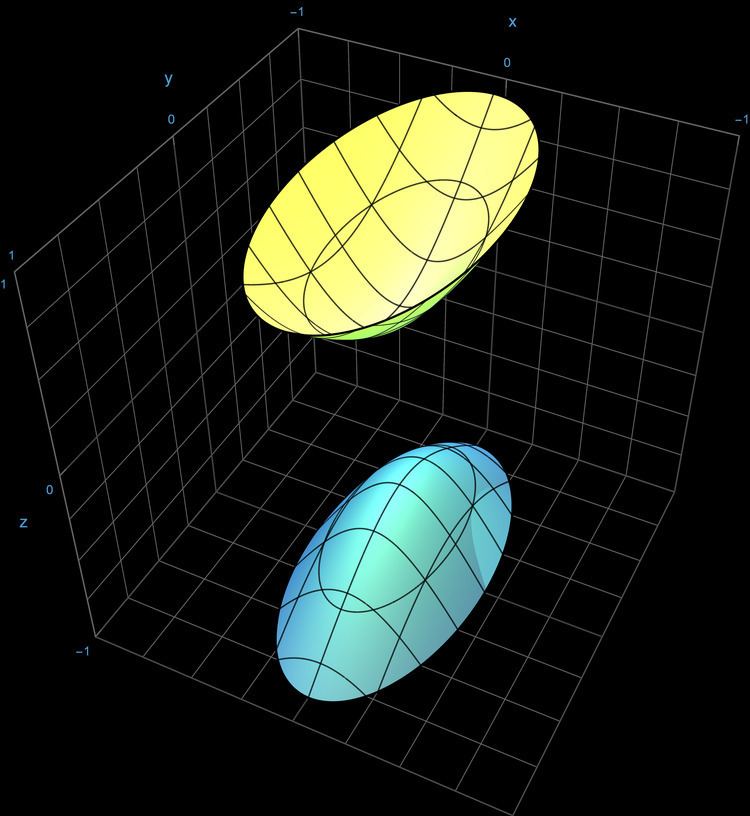 | ||
In physics, particularly in quantum field theory, configurations of a physical system that satisfy classical equations of motion are called on shell, and those that do not are called off shell.
Contents
In quantum field theory, virtual particles are termed off shell (mass-shell in this case) because they don't satisfy the Einstein energy-momentum relationship; real exchange particles do satisfy this relation and are termed on shell (mass-shell). In classical mechanics for instance, in the action formulation, extremal solutions to the variational principle are on shell and the Euler–Lagrange equations give the on shell equations. Noether's theorem is another on shell theorem.
Mass shell
The term is a synonym for mass hyperboloid, meaning the hyperboloid in energy–momentum space describing the solutions to the equation:
which gives the energy E in terms of the momentum
Virtual particles corresponding to internal propagators in a Feynman diagram are in general allowed to be off shell, but the amplitude for the process will diminish depending on how far off shell they are. This is because the
When speaking of the propagator, negative values for E that satisfy the equation are thought of as being on shell, though the classical theory does not allow negative values for the energy of a particle. This is because the propagator incorporates into one expression the cases in which the particle carries energy in one direction, and in which its antiparticle carries energy in the other direction; negative and positive on-shell E then simply represent opposing flows of positive energy.
Scalar field
An example comes from considering a scalar field in D-dimensional Minkowski space. Consider a Lagrangian density given by
The Euler-Lagrange equation for this action can be found by varying the field and its derivative and setting the variation to zero, and is:
Now, consider an infinitesimal spacetime translation
Substituting for
Since this has to hold for independent translations
This is an example of equation that holds off shell, since it is true for any fields configuration regardless of whether it respects the equations of motion (in this case, the Euler-Lagrage equation given above). However, we can derive an on shell equation by simply substituting the Euler-Lagrange equation:
We can write this as:
And if we define the quantity in brackets as
This is an instance of Noether's theorem. Here, the conserved quantity is the stress–energy tensor, which is only conserved on shell, that is, if the equations of motion are satisfied.
